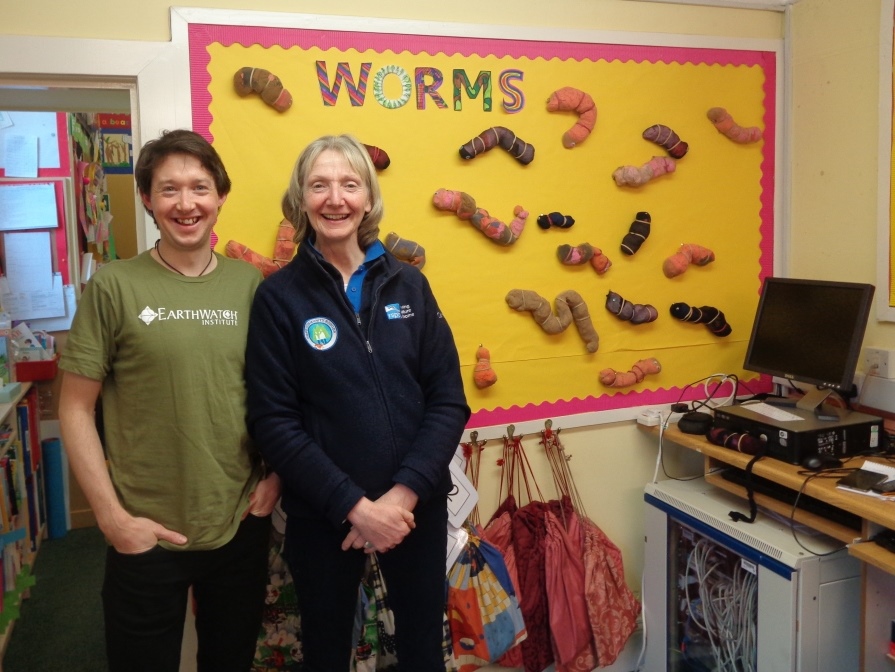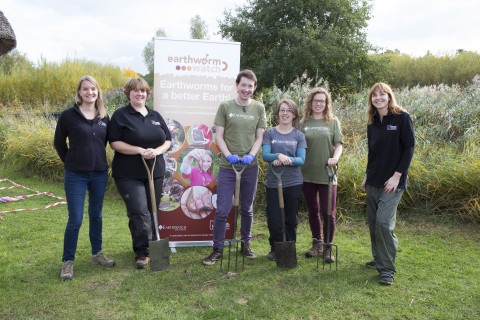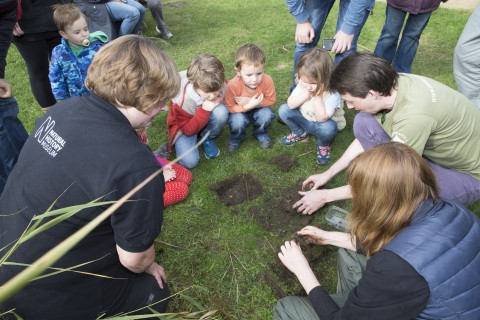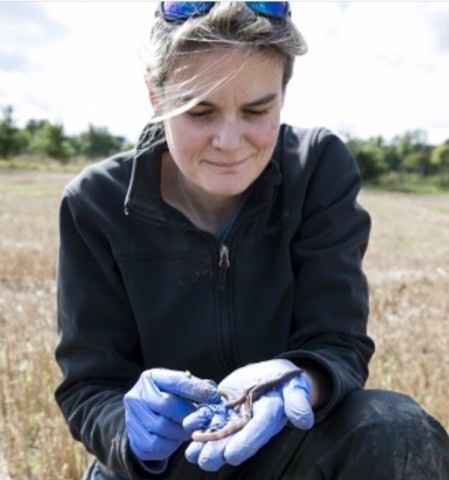It is only a matter of days until Spring will be officially here. Welcome signs from the glorious yellows of lesser celandines and daffodils to the tell-tale blooms of snowdrops, magnolias and crocuses mean that plants are beginning to take advantage of the longer, warmer days. In late March, birds start to look for suitable places to nest and the availability of spring flowers and warm air will attract the first bumblebees.
However, one creature, the enigmatic earthworm, has been busy all winter. Even when it gets really cold, it seems earthworms love to keep active. We learnt from Victoria’s recent blog ‘Where do earthworms go in winter?’ that just under the soil surface it is a few degrees warmer and earthworms continue to feed on dead and decaying leaves and organic material, mixing the soil horizons through their burrowing, aerating the soil and storing carbon in tiny fragments.
In order for us to better understand the abundance of earthworms in different soils across the UK, Earthworm Watch is asking you to count earthworms and categorise the soils they are found in. To do this effectively, we are asking everyone to monitor earthworms numbers found in soil samples (taken from two different habitats) across a range of environmental conditions. To meet this challenge, we are asking you to survey far and wide across as broad a geographical area as you can. We currently have data points in the south, south east, but far fewer in the west, north, north-west and north-east England. We need more and the data you collect is even more value to our scientists if it occurs where environmental conditions vary.
Earthwatch’s Discover Earth team is delighted to have taken Earthworm Watch to Abernethy, near Aviemore in Scotland, working with two local primary schools with support from RSPB Community Ranger Alison Greggans. Pupils took part in Earthworm Watch and earthworm-themed activities, learnt more about biodiversity in the soil and important environmental issues. Earthwatch’s Discover Earth programme is bringing citizen science into schools to engage future generations in scientific research and sustainability issues with Earthworm Watch, The Tea Bag Index and Freshwater Watch and the UN’s Sustainability Development Goals (SDG’s).
The soils close to Abernethy where Earthworm Watch samples were taken range from mineral, brown soils to peaty soils and pure peat. The type of soil found in an area depends on the rock type, the vegetation (deciduous trees or conifers, heathland or wetland), the topography and the climate. If leaf debris is more acidic (perhaps because it consists of conifer needles), the water passing through it can leach minerals out of the soil. This acidity, in turn, will also inhibit the ability of ‘decomposer’ organisms to break down plant matter and these conditions combined can lead to a build-up of peat. With more acidic soils, the abundance of earthworms is likely to be reduced. Despite the more acidic soil in Abernethy, however, soil feeding and deep living earthworms were found in the school grounds, though perhaps less numerous than those found in neutral PH soils.
If you live in an unusual area of the country or somewhere based on our map which has yet to be surveyed, please help us fill in the gaps and order a pack. It's those unusual soils in the far reaches of the UK that will tell us so much more about earthworm ecology – so please get involved!
If you would like to find out more about Earthwatch’s Discover Earth programme please click here.




